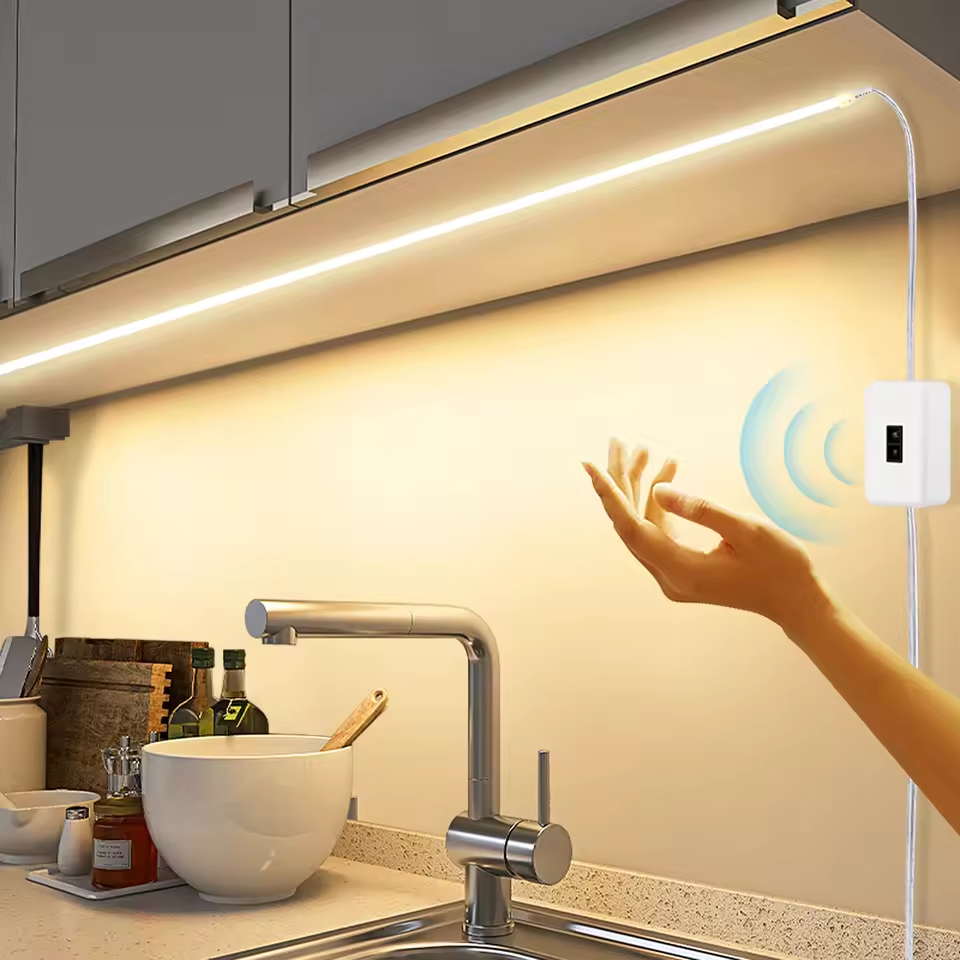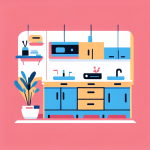Factors to Consider When Choosing Kitchen Cabinet Paint Colors
Selecting the best kitchen cabinet paint color involves considering several factors. Your choice should complement your kitchen’s overall design, lighting, and existing elements.
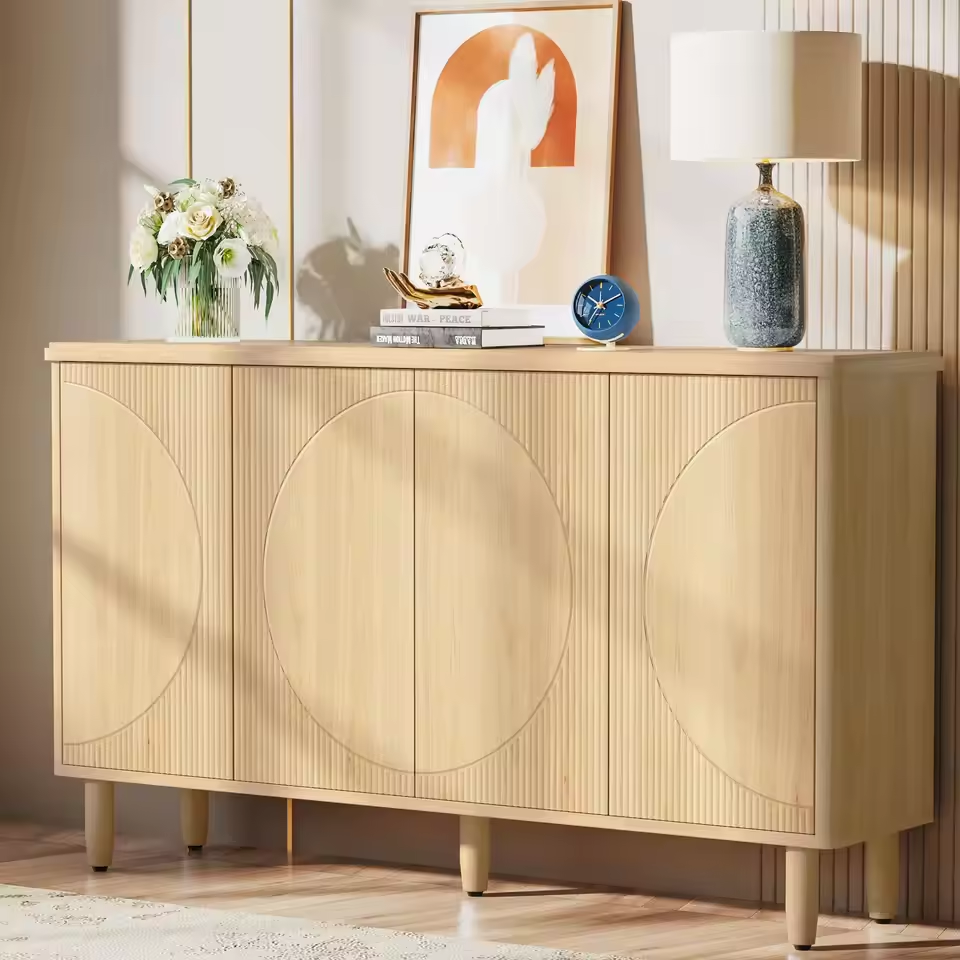
The Influence of Kitchen Style and Layout
Your kitchen’s style greatly impacts paint choices. For a traditional kitchen, classic colors like white or beige work well. Contemporary kitchens can embrace bold colors like navy or black. Consider your kitchen layout too. Smaller kitchens may benefit from light, airy colors to create a sense of space. Larger kitchens can support deeper, richer tones for added warmth and luxury.
Lighting Considerations for Paint Color Selection
Lighting significantly affects how paint colors appear. Natural light highlights true color tones during the day. Artificial light can alter these tones, especially at night. Bright kitchens with ample natural light can highlight bold colors beautifully. Dimly lit kitchens may require lighter colors to keep the space bright and inviting. Always test paint samples in your kitchen under different lighting conditions.
Coordinating Paint Colors with Countertops and Backsplashes
Your cabinet paint should harmonize with countertops and backsplashes. Neutral cabinet colors like gray or cream work well with patterned countertops. Bold cabinets can pair nicely with simple, solid-surface countertops. Don’t ignore backsplashes—coordinate or contrast for added visual interest. A balanced combination creates a cohesive and stylish kitchen design.
Popular Paint Colors for Kitchen Cabinets
Your best kitchen cabinet paint color can transform your kitchen’s look and feel. From timeless classics to bold, modern choices, the options are endless. Here are three popular categories to consider:
Timeless Whites and Neutrals
White and neutral cabinet colors are always in demand. They brighten and open up any space, making even small kitchens look larger. Shades like crisp white, cream, and light gray provide a fresh and clean aesthetic. They pair effortlessly with various design styles, from traditional to modern. Neutrals also blend seamlessly with most countertop and backsplash designs, offering flexibility in your kitchen decor. Opt for these classics if you prefer a light, airy, and inviting ambiance.
Bold and Modern Color Options
For a standout kitchen, bold cabinet colors are the way to go. Shades like navy blue, deep green, or charcoal gray create a dramatic and modern look. These colors add personality and depth to larger kitchens, turning cabinets into a focal point. Bold tones also pair well with simple countertops and backsplashes, ensuring the overall design remains balanced. Be sure to test bold colors under your kitchen’s lighting to get the best results.
Trending Two-Tone Color Combinations
Two-tone cabinets are a popular and stylish choice for a unique kitchen design. This trend features different colors for upper and lower cabinets or an accent island color. For example, pair white upper cabinets with navy lower cabinets for contrast. Another trendy combination is gray cabinets with wood tones for a warm, balanced look. Two-tone designs allow for creativity and can make your kitchen feel dynamic and visually appealing. Choose complementary colors that harmonize with existing elements like countertops and flooring.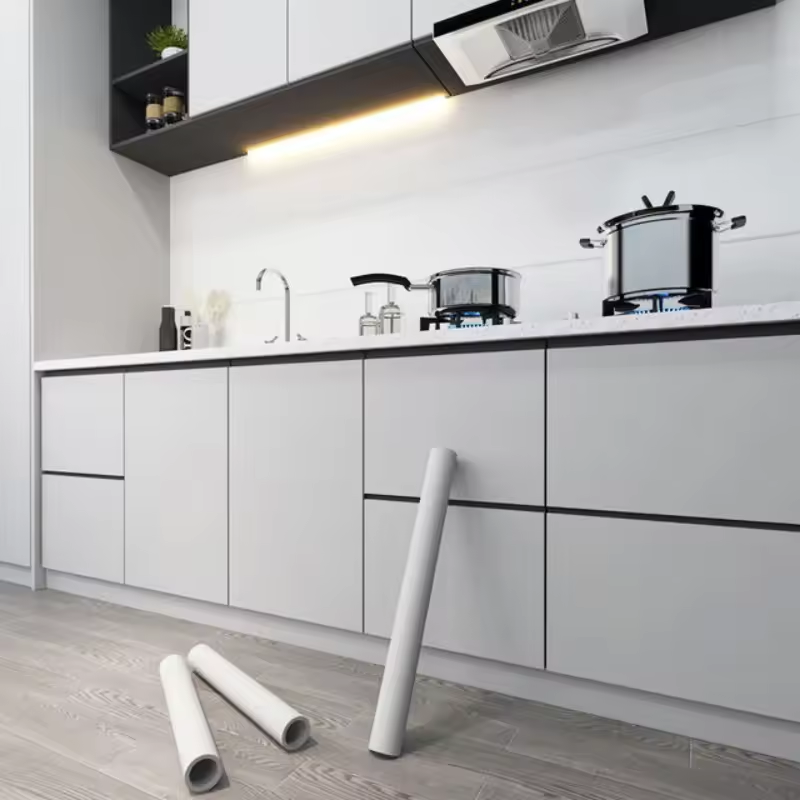
Paint Finishes for Kitchen Cabinets
Choosing the right paint finish for your kitchen cabinets is essential. The finish impacts durability, appearance, and cleaning ease. Different finishes offer unique characteristics that can enhance your kitchen’s style. Here’s a breakdown of the main types and their advantages and disadvantages.
Differences Between Matte, Satin, Semi-Gloss, and High-Gloss
Understanding the differences between paint finishes helps you make an informed choice:
- Matte Finish: Offers a smooth, non-reflective look. It’s great for a subtle, modern style but may show stains and require more maintenance.
- Satin Finish: Slightly reflective and smoother than matte. It is easy to clean and works in kitchens with light wear.
- Semi-Gloss Finish: Shiny and durable. It resists stains and moisture and is perfect for high-traffic kitchen areas.
- High-Gloss Finish: Extremely reflective and eye-catching. It works well for contemporary kitchens but can highlight imperfections in the cabinets.
Each finish offers a distinct look. Your choice should balance desired style with functional needs.
Pros and Cons of Different Finishes
Each paint finish has its strengths and weaknesses. Here’s what to consider:
- Matte Finish:
- Pros: Modern and elegant. Hides minor surface flaws.
- Cons: Prone to stains. Harder to clean.
- Satin Finish:
- Pros: Easy to maintain. A soft, polished look.
- Cons: Not as striking or durable as semi-gloss or high-gloss finishes.
- Semi-Gloss Finish:
- Pros: Durable and easy to wipe clean. Excellent for areas prone to splashes.
- Cons: Highlights surface imperfections more than satin.
- High-Gloss Finish:
- Pros: Reflective, dramatic, and visually appealing.
- Cons: Requires a smooth surface. Shows fingerprints and scratches easily.
Choose a finish that balances practicality with aesthetic appeal. Test finishes to see how they look under your kitchen’s lighting and with your chosen paint color. Selecting the perfect finish can enhance your cabinets, making them both stylish and functional.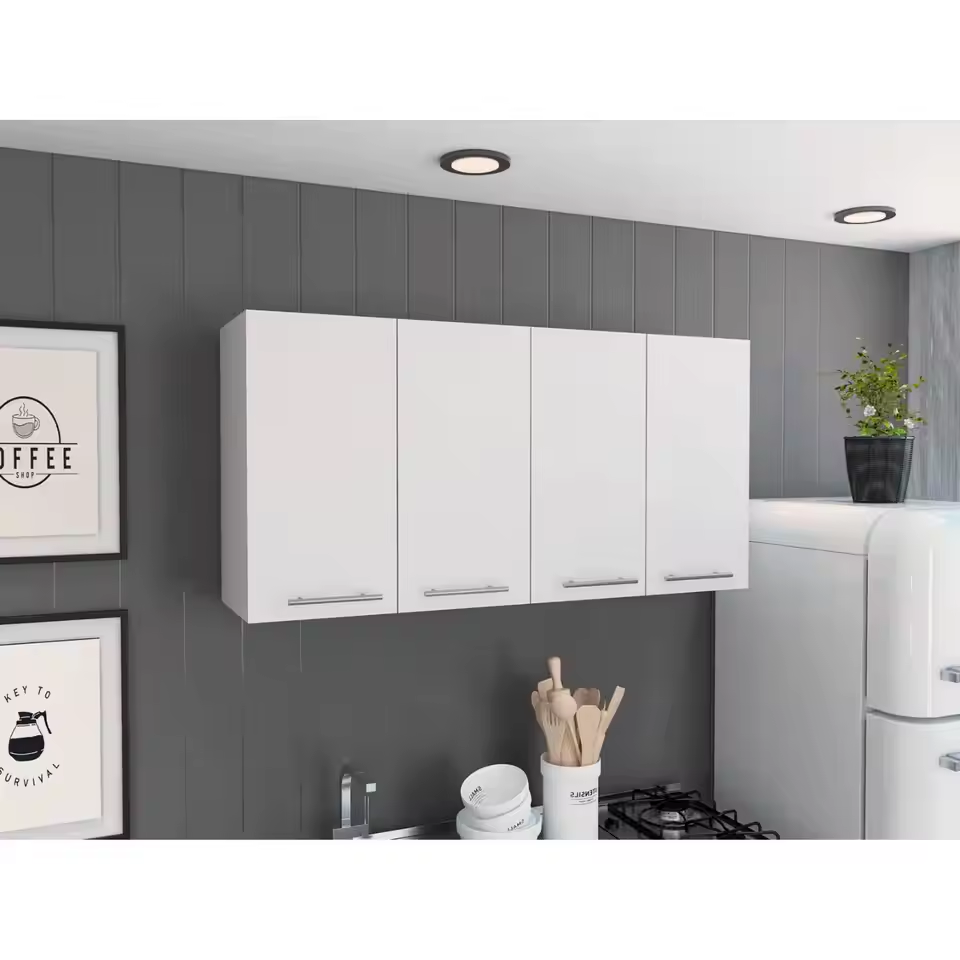
How to Choose the Right Paint for Your Cabinets
Selecting the right paint for kitchen cabinets is crucial for durability and design appeal. Cabinets endure daily use, spills, and cleaning, making the paint choice very important.
Oil-Based vs. Water-Based Paints
Choosing between oil-based and water-based paints depends on your needs and preferences:
- Oil-Based Paints:
- Highly durable and resistant to scratches.
- Provide a smooth, glossy finish.
- Require longer drying time and emit strong fumes.
- Water-Based Paints:
- Dry faster and are easier to clean up.
- Emit fewer odors and are more eco-friendly.
- Less durable than oil-based paints but easier to touch up.
Assess your kitchen’s level of use before deciding on the ideal type of paint.
Durable Paints for High-Use Kitchens
For kitchens with high activity, choose paints specifically designed for durability:
- Look for paints labeled “hardwearing” or “cabinet-grade”.
- Semi-gloss and high-gloss finishes are more resistant to stains and moisture.
- Some brands offer advanced formulas to resist chipping and peeling.
Durable paints keep your cabinets looking great despite heavy use.
Eco-Friendly and Low-VOC Paint Options
Eco-friendly paints focus on health and sustainability. Consider these options for a greener approach:
- Low-VOC Paints: Emit fewer harmful chemicals and are safer for indoor environments.
- Zero-VOC Paints: No volatile organic compounds, making them ideal for kitchens with kids and pets.
- Opt for water-based types as they tend to have lower VOC levels.
Eco-friendly paints combine style, safety, and environmental care without compromising quality.
Tips for Painting Your Best Kitchen Cabinet Paint
Your best kitchen cabinet paint can refresh your kitchen and elevate your design. Proper preparation, the right tools, and avoiding common mistakes are essential for success.
Preparing Cabinets Properly Before Painting
Preparation is key to achieving a smooth and lasting finish. Follow these steps:
- Clean Thoroughly: Remove grease and dirt with a degreaser or soap.
- Remove Hardware: Take off cabinet doors, handles, and hinges to ensure even coverage.
- Sand Surfaces: Lightly sand cabinets to remove old paint and roughen the surface for better paint adhesion.
- Fill Imperfections: Use wood filler to fix dents and holes for a perfect base.
- Prime Cabinets: Apply a high-quality primer to seal the surface and enhance color durability.
Proper prep ensures paint sticks well and lasts longer.
Tools and Techniques for a Professional-Looking Finish
Using the right tools and techniques makes a big difference:
- Quality Brushes and Rollers: Invest in high-quality brushes for smooth application and reduced streaks.
- Paint Sprayer: Use a sprayer for an even and sleek finish, especially with large cabinets.
- Work Methodically: Paint in thin layers, allowing each coat to dry completely before applying the next.
- Start at Edges: Begin painting edges and corners, then move to larger surfaces.
- Choose Durable Paints: Use cabinet-grade paints with long-lasting formulas for high-use areas.
Well-chosen tools and techniques can transform your cabinets into a professional masterpiece.
Common Mistakes to Avoid
Avoiding mistakes can save time and effort. Watch out for these pitfalls:
- Skipping Prep: Failing to clean, sand, or prime reduces paint adhesion and leads to poor results.
- Using Wrong Paint: Avoid wall paints; choose durable paint specifically made for cabinets.
- Applying Thick Coats: Multiple thin coats dry better and look smoother than one thick coat.
- Ignoring Dry Time: Let each layer dry fully to prevent smudges and imperfections.
- Not Testing Colors: Test your paint in the kitchen’s lighting to ensure it looks right.
A careful approach avoids errors and ensures your cabinets look flawless.
Maintenance and Longevity of Painted Kitchen Cabinets
Keeping your kitchen cabinets in top condition ensures their beauty and durability. Proper care helps extend the life of painted surfaces and keeps them looking fresh. Follow these practical tips for maintaining your cabinets effectively.
Cleaning and Care Recommendations
Regular cleaning and gentle care can prevent damage to painted cabinet surfaces. Here’s how to maintain them:
- Use Soft Cloths: Clean with a microfiber cloth to avoid scratches.
- Avoid Harsh Chemicals: Use mild dish soap mixed with warm water for cleaning.
- Act Quickly on Spills: Wipe spills immediately to prevent stains or warping.
- Dust Frequently: Dust cabinets weekly to keep surfaces smooth and clean.
- Clean Grease Gently: Use a mixture of vinegar and water to remove grease without harming the paint.
- Keep Cabinets Dry: Use a dry cloth to remove any water after cleaning to avoid swelling.
Following these tips will maintain your cabinets’ shine and ensure a lasting finish.
Touch-Up Tips to Keep Cabinets Looking Fresh
Even well-maintained cabinets can show wear over time. Quick touch-ups can restore their beauty:
- Keep Extra Paint: Store leftover cabinet paint for minor touch-ups later.
- Fix Chips Promptly: Fill chips or scratches with matching paint to avoid further damage.
- Avoid Brush Marks: Use a small foam brush for smooth touch-up applications.
- Sand Lightly: Before touching up, lightly sand the area for better paint adhesion.
- Blend Colors: Feather the edges of the touch-up paint to blend seamlessly with the original.
- Use Touch-Up Pens: Many brands offer paint pens that match your cabinet color for quick repairs.
Regular touch-ups can keep your best kitchen cabinet paint looking fresh, extending their lifespan and style. With proper care, your painted cabinets will remain a stunning part of your kitchen for years.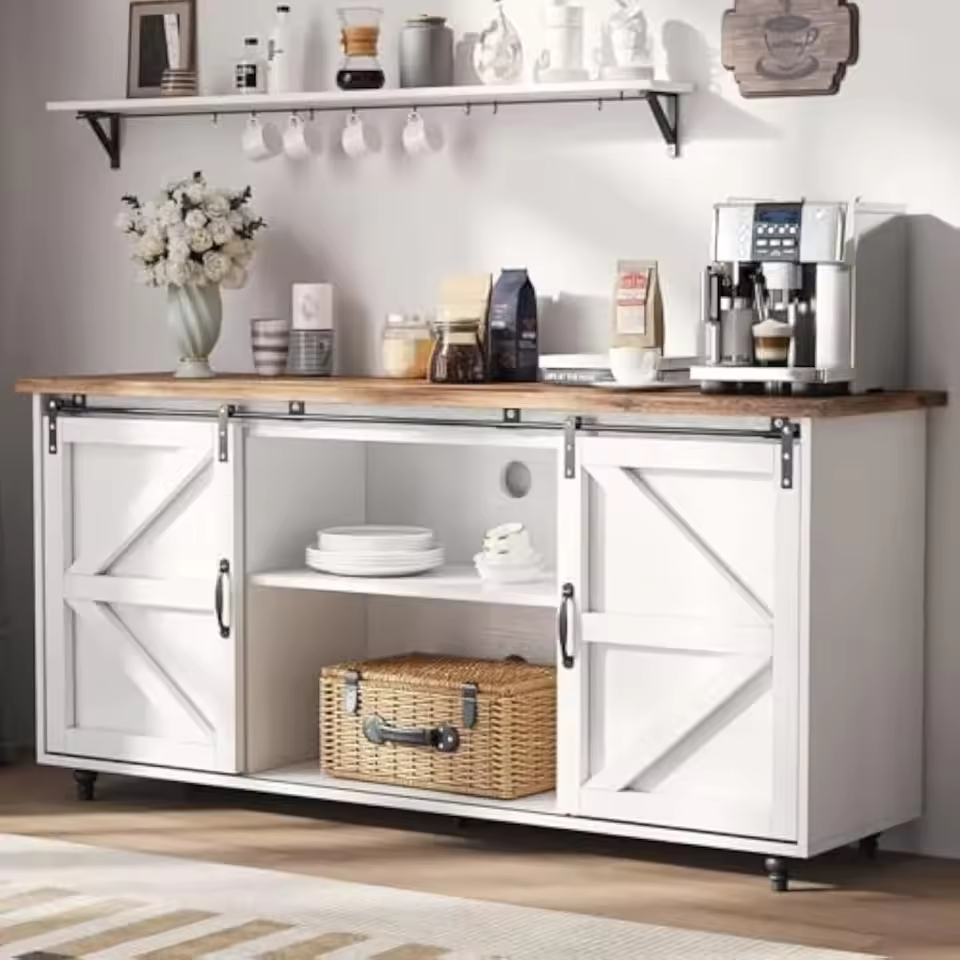
Inspiring Ideas for Painted Kitchen Cabinets
Transform your best kitchen cabinet paint with creativity and style. Use paint as a simple yet impactful tool to refresh your kitchen’s look.
Creative Ways to Use Color Accents
Adding color accents to your best kitchen cabinet paint can make them stand out beautifully. Here are several ideas:
- Highlight the Island: Paint your kitchen island in a bold color like teal or navy. This creates a focal point.
- Drawer and Cabinet Variations: Use a different shade for drawers or certain cabinets to add contrast and depth.
- Inside Surprise: Paint the interior of open-shelving cabinets in vibrant tones like yellow or turquoise for an unexpected pop of color.
- Two-Tone Combo: Pair a neutral color like white or beige with a bold lower cabinet tone like charcoal or forest green.
- Soft Ombre Effect: Blend light-to-dark shades of the same color across cabinet sections for a unique gradient look.
By using color accents strategically, you can add a personal touch that enhances your kitchen design.
Real-Life Examples of Stunning Cabinet Transformations
Real kitchens showcase the power of paint in transforming cabinets. Here are some inspiring examples:
- Classic White Elegance: A small, dark kitchen was brightened with crisp white cabinets and light gray countertops. The result looks timeless and elegant.
- Dramatic Navy Depth: Large cabinets painted in deep navy brought modern sophistication to a spacious kitchen, paired with gold hardware for contrast.
- Vibrant Yellow Pop: A sunny yellow was used for upper cabinets, energizing the space while paired with white lower cabinets for balance.
- Rustic Charm with Sage Green: Sage green cabinet colors combined with natural wood accents created a modern farmhouse vibe in one kitchen.
- Two-Tone Chicness: A suburban kitchen combined soft cream upper cabinets with navy lower ones for a striking yet balanced look.
These transformations show how paint can revive cabinets, complementing various styles and layouts. Whether subtle or bold, painted cabinets can turn ordinary kitchens into stunning spaces.
